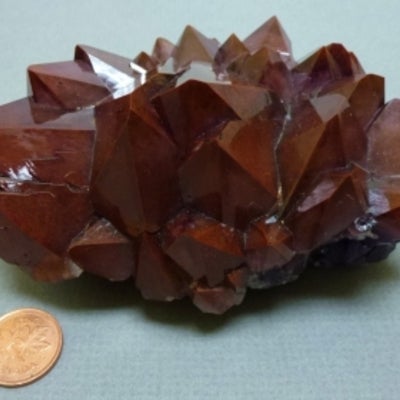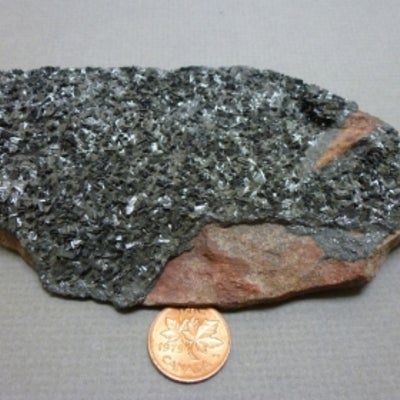View a slide show of minerals common to Northern Ontario and below that, read about the geologic history of the area.
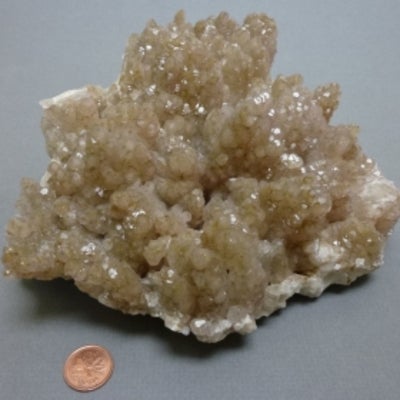
Calcite forms in many different geological environments. It is one of the most common minerals on the face of the Earth and forms from both igneous and sedimentary processes, as well, it can be metamorphosed to produce marble. Calcite is a major component in the igneous rocks called carbonatite, which is found in the Wawa region. Helen Mine Wawa, Ontario
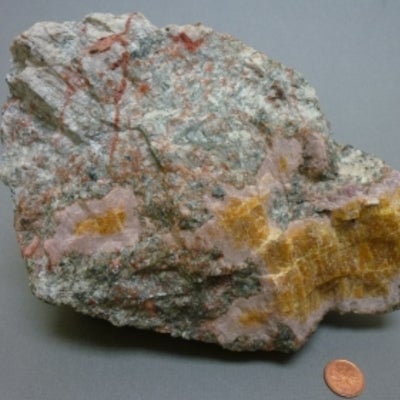
Cancrinite is a rare member of the feldspathoid group of silicate minerals, typically occurring as yellowish grains and forms as an alteration product in nepheline and feldspar in nepheline-syenite and related rocks. It can also be found in metamorphic rocks at the contact zones between limestone and igneous intrusive. French River and Highway 69. Ontario
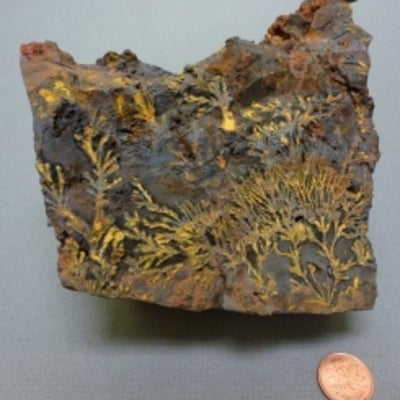
Goethite is an iron bearing oxide mineral found in soil and other low-temperature environments. Goethite often formed though the weathering of other iron-rich minerals. It may also be precipitated by groundwater or in other sedimentary conditions, or form as a primary mineral in hydrothermal deposits. Dendritic Goethite from Steeprock Lake Mine Atikokan, Ontario






The Canadian Shield is one of the world's richest areas in terms of mineral ores, such as nickel, gold, silver, and copper. It also hosts prehistoric alkaline intrusions that are lower-middle Cambrian in age that produced rare minerals like sodalite and cancrinite.
Over hundreds of thousands of years, the Canadian Shield was eroded, creating the present-day topographic appearance of relatively low relief. Most of the rocks exposed at Earth’s surface today consist of igneous rocks formed by Precambrian volcanic and magmatic activity and metamorphic rocks created through collisional events that created suitable conditions for metamorphism to occur (high temperatures and high pressure).
Economically Important Minerals of Northern Ontario
From the 1940s to 1980, an open-pit iron mine operated near Atikokan, Ontario. The ores extracted were composed of hematite, magnetite, jasper, and white quartz.
Next, iron deposits north of Wawa Lake were discovered during the Michipicoten Gold rush in the late 1890s. This mine, Helen mine, was the first gold mine to come into production from this deposit. The main minerals being extracted were goethite, pyrite, and siderite.
Northern Ontario also has large quantities of amethyst formed during faulting of the Lake Superior basin, between layers of Archean and Proterozoic rocks. The formation of amethyst was restricted to near-surface conditions in veins and vugs. The beautiful colour of amethyst is caused by iron inclusions. Fun fact: amethyst is Ontario’s official provincial mineral!
In Thunder Bay, amethyst is found with other minerals such as:
- Pyrite
- Galena
- Sphalerite
- Chalcopyrite
- Baryte
- Calcite
- Fluorite
- Native silver
Definitions
Tectonic Processes: Earth’s solid outer crust, the lithosphere, is separated into plates that move over the asthenosphere, the molten upper portion of the mantle. Oceanic and continental plates come together, spread apart, and interact at boundaries all over the planet.
Ore: Minerals which are essential sources of raw material to the chemical industry, and are concentrated in certain geologic environments as ore deposits.
Alkaline: Substance that has a pH higher than 7.
Eroded (past tense of erosion): Physical and chemical erosion. Physical erosion of rocks largely by wind and water to produce solid particles such as clay, silt, sand, and pebbles. Chemical erosion is the alternation of rocks by eater to produce chemical elements in solution and commonly residual clay.
Igneous rock: Rocks formed by the solidification of molten material that originated from the earth.
Metamorphic rock: Any rock derived from preexisting rocks by mineralogical, chemical, and/or structural changes, essentially in the solid-state, in response to marked changes in temperature, pressure, shearing stress, and chemical environment, generally at depth in the Earth's crust.
Basin: A dip or depression in the surface of land or ocean floor.
Veins and Vugs: Pockets in rocks where liquid and/or gas are trapped creating an environment suitable for crystal formation.
Inclusions: A term applied to crystals and anhedral of one mineral involved in another; and to fragments of one rock enclosed in another, as when a volcanic flow picks up portions of its conduit.
